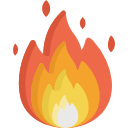6 Signs That Your Dryer Duct Needs Cleaning:






1) Home Fires Involving Clothes Dryers and Washing Machines
In 2010–2014:
The leading items first ignited in clothes dryer fires were dust, fiber, or lint (27%) and clothing (26%). In washing machine fires, the leading items first ignited were electrical wire or cable insulation (26%) and appliance housing or casing (24%).
Most of these home fires involved clothes dryers (92%).
The leading cause (31%) of home clothes dryer and washer fires was failure to clean.
*Homes are dwellings, duplexes, manufactured homes, apartments, townhouses, row houses and condominiums.
Source: NFPA Research: www.nfpa.org/research Contact information: 617-984-7451 or research@nfpa.org
2) Home Dryer Fires
In 2014-2018, local fire departments responded to an estimated average of 13,820 home1 structure fires per year in which dryers were involved in the ignition. These fires caused an average of seven civilian deaths, 344 civilian injuries, and $233 million in direct property damage annually.
Dryers caused 4 percent of home structure fires, less than 1 percent of home fire deaths, and 3 percent of home fire deaths and direct fire property damage. One-third (32 percent) of dryer fires were caused by a failure to clean the dryer vent. This appears to be due mainly to lint build-up, as 27 percent of dryer fires started when dust, fiber or lint ignited.
Source: Home Dryer Fires, June 2020 1 NFPA Research, Quincy, MA
3) Clothes Dryer Fires in Residential Buildings
Most US households have a dryer, however, many are not aware that clothes dryers must be maintained and properly installed to prevent structural fires.
Proper maintenance involves removal of lint from the traps, vents and surrounding areas of the dryer on a regular basis.
A dryer that is overheated from lint obstruction can become hot enough to cause dryer components to malfunction and produce sparks or even flames, leading to ignition of lint, dust and fibers.
For optimal venting the dryer ductwork should be as short as possible and have limited bends in order to expel the lint.
The terminal dryer duct should end with a dryer duct hood that is vented to the outside of the home.
Clothes dryer manufacturers state that no plastic flexible hoses be used between the clothes dryer and the dryer vent.
In most cases, clothes dryer fires can be prevented. “Failure to clean” is the number one factor contributing to clothes dryer fires, followed by mechanical and electrical failure.
TFRS Volume 7, Issue 1/ Clothes Dryer Fires in Residential Buildings Page 5
According to the U.S. Fire Administration, you can greatly reduce your risk of a clothes dryer fire by simply cleaning your lint filter after each use and your dryer vent at least once a year.Teresa BitlerUS News Updated: Aug. 21, 2023
The National Fire Protection Association (NFPA) recommends that you clean the dryer vent once a year or more often if you notice that it is taking longer than normal for your clothes to dry.nfpa.org/education ©NFPA 2018
The National Fire Protection Association states that dryers and washing machines cause an average of 15,970 fires annually, with dryers causing 92% of them. More than 1/3 of the fires were attributed to a failure to clean as the leading factor contributing to the ignition of clothes dryer fires in homes from 2018-2020.
Source: National Fire Incident Reporting System
The process of cleaning the dryer ductwork involves using a rotating brush attached with fiberglass rods to remove lint and debris. To clean both ends of the ductwork, the rotating brush is inserted into the external dryer duct opening until it reaches the inside of the laundry room and it is also cleaned from the laundry room duct to the outside. After cleaning is complete, the transition duct and the exterior dryer vent cover are properly re-installed to provide an airtight system. If no repairs are necessary, the whole process takes about an hour.
According to a survey by the National Fire Protection Association, only about 31% of homeowners clean their dryer vent once a year or more.
Every year people die, and homes and buildings are destroyed by dryer fires.
Research shows:
“Clothes dryer fires account for about 15,600 structure fires, 15 deaths, and 400 injuries annually.
Eighty percent of clothes dryer fires in structures occur in residential buildings.
Annually, 12,700 clothes dryer fires occur in residential buildings resulting in 15 deaths and 300 injuries.
‘Failure to clean’ is the leading factor contributing to clothes dryer fires in residential buildings.”
TFRS Vol. 7, Issue 1/Jan 2007
So, fire prevention is the main reason to clean your dryers ductwork.
Start by finding the location of your dryer exhaust termination. If it’s on the roof, then it’s best left to a professional dryer vent cleaning service to do an inspection and cleaning.
If your dryer exhaust termination is on a side wall, it should be covered by a hood with a flap or louvered vent cover. To check for proper venting, turn on your dryer & then go back outside.
Louvers or an outside flap that don’t open when the dryer is on means air flow has been restricted due to lint buildup.
Any lint accumulation or debris in between the louvers requires removal.
Increased lint buildup in laundry room, on dryer filter, lint housing or outdoor vent cover
Hot dryer or hot laundry room
Clothing is unusually hot to the touch when the drying cycle is done
Laundry does not dry after 1 cycle
A musty or burning smell noted in your dryer or laundry room
Areas of condensation in ceiling or dryer ductwork
Louvers or flap on the outside dryer vent cover remain closed while your dryer is on
As far as dryer fires are concerned, an article by Consumer Reports states that dryer sheets are not likely to be the cause of a dryer fire unless you operate your dryer without the lint screen. Interestingly, liquid fabric softener use can increase the flammability of certain fabrics.
A clean dryer vent is critical for maintaining safety and efficiency in your home. If dryer vent cleaning is overlooked, a blocked dryer vent can lead to the following:
Fire Hazard: This is one of the worst consequences because lint buildup is fuel for a fire in your dryer or its ductwork. Lint, which is highly flammable, can accumulate in the vent & your dryer will generate high temperatures. A block in airflow can then lead to a devastating house fire. In fact, failure to clean dryer vents is a leading cause of home fires.
Risk of CO Poisoning: For gas dryer owners, a blocked vent can prevent carbon monoxide, a colorless, odorless gas, from escaping and can cause death.
Dryer Efficiency: Sensors will shut down the heating element or gas burner repeatedly until the dryer temperature drops, so your clothes remain damp after one cycle.
Energy Costs: When airflow is restricted, your dryer must work harder & run longer to dry clothes, leading to higher energy bills.
Dryer Lifespan: Extra strain on your dryer can shorten its 10-13 yr. lifespan, resulting in costly repairs.
Clothing Damage: Extended drying times wear down fabrics. Delicate items are particularly at risk of damage.
Poor indoor air Quality: A blocked or poorly maintained dryer vent can develop leaks which release artificial scents, microfibers & dust into your home, thus affecting sensitive groups.
Lost Time: Extended drying times because your dryer not operating efficiently.
Indoor Humidity: A poorly vented dryer can make your home feel like a sauna and can cause wood rot as well as health problems from mold growth.
Condensation: Water beads may appear inside your dryer door or water dripping may be seen along the dryer exhaust and cause structural damage and mildew.
Decreased risk of fire as well as decreased CO poisoning, decreased damage to clothing, decreased indoor air humidity, decreased water damage, decrease in energy bills and you will save time which you can use on other activities.
You will increase good indoor air quality, increase your dryer's efficiency, prolong its life span as well as save $$ money on unnecessary repairs.
It’s frustrating to find that your dryer is still not drying well despite carefully cleaning your own dryer vent. Here are some troubleshooting tips:
Vent Blockage: You may not have cleaned the vent entirely through & some debris remains compacted in the ductwork. Check the dryer vent termination & if you feel good airflow then the blockage may be inside the dryer duct.
Power supply or Heating Components: Most electric dryers require a 240 V power supply as well as a double pole 30 amp breaker to operate. There may be damage to the thermostat or the heating element. For gas dryers check the gas supply & the shut off valve.
Blower Issues: Dryers have a blower to circulate the warmed air. Its belt may be worn out.
Vent Damage: The transition duct may be punctured or crushed between the dryer & the wall or a component of the ductwork may be disconnected.
Lint Filter Housing: When the lint screen or its housing are full of lint this will decrease your dryer’s efficiency.
Overloading: Follow the manufacturer’s recommended load capacity.
Incorrect Settings: Each fabric type requires a certain setting or cycle in order to dry.
Faulty Installation : The dryer ductwork may be longer than 25 ft, has too many bends or a component is loose & has condensation.

